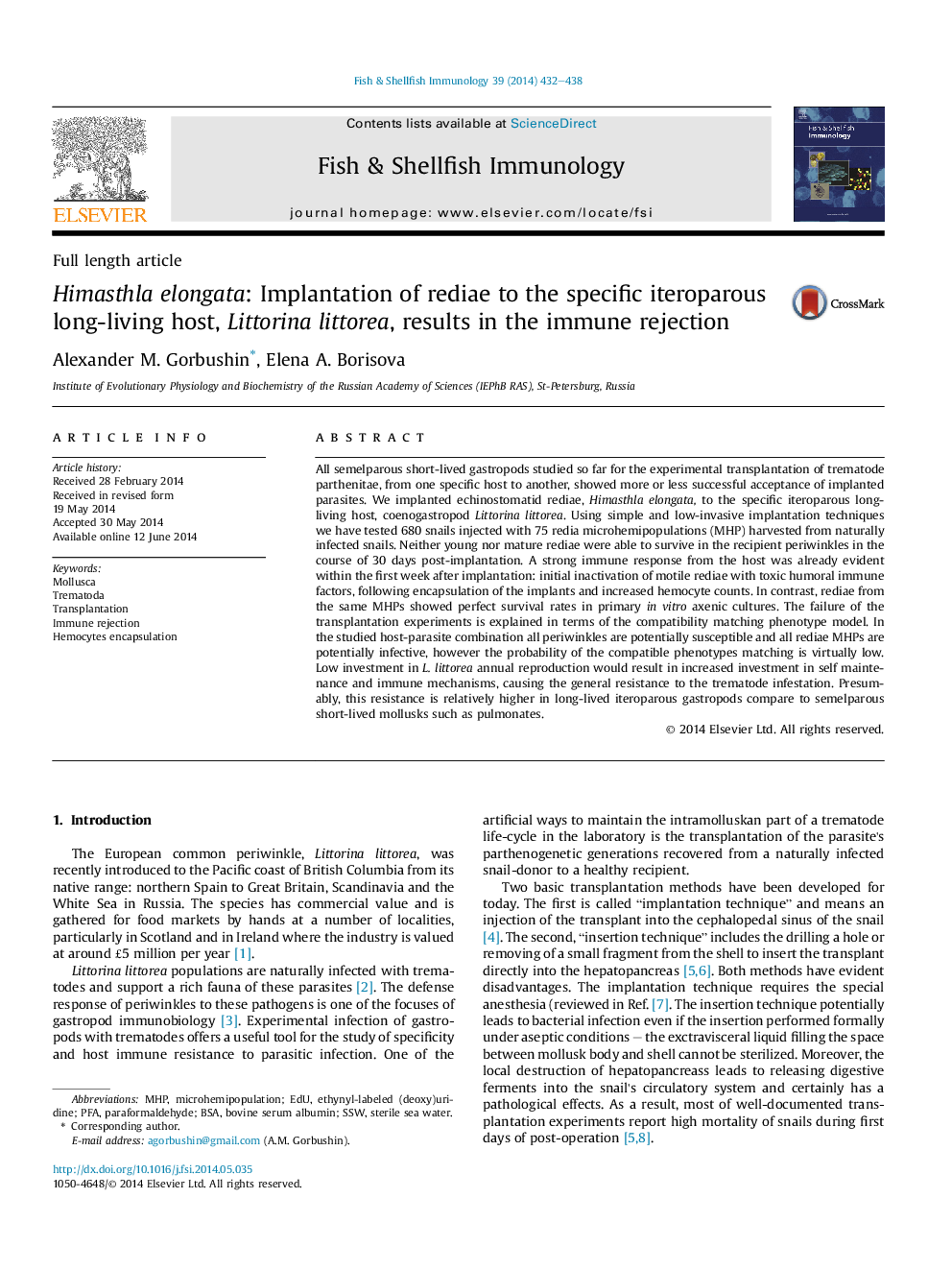| کد مقاله | کد نشریه | سال انتشار | مقاله انگلیسی | نسخه تمام متن |
|---|---|---|---|---|
| 2431602 | 1106764 | 2014 | 7 صفحه PDF | دانلود رایگان |

• We transplanted rediae from naturally infected periwinkles to healthy ones.
• Strong immune response led to rejection and encapsulation of transplants.
• Rediae mortality rate correlated with seasonal immune status of periwinkles.
• Resistance to trematodes correlates with life-history strategy of host-snail species.
All semelparous short-lived gastropods studied so far for the experimental transplantation of trematode parthenitae, from one specific host to another, showed more or less successful acceptance of implanted parasites. We implanted echinostomatid rediae, Himasthla elongata, to the specific iteroparous long-living host, coenogastropod Littorina littorea. Using simple and low-invasive implantation techniques we have tested 680 snails injected with 75 redia microhemipopulations (MHP) harvested from naturally infected snails. Neither young nor mature rediae were able to survive in the recipient periwinkles in the course of 30 days post-implantation. A strong immune response from the host was already evident within the first week after implantation: initial inactivation of motile rediae with toxic humoral immune factors, following encapsulation of the implants and increased hemocyte counts. In contrast, rediae from the same MHPs showed perfect survival rates in primary in vitro axenic cultures. The failure of the transplantation experiments is explained in terms of the compatibility matching phenotype model. In the studied host-parasite combination all periwinkles are potentially susceptible and all rediae MHPs are potentially infective, however the probability of the compatible phenotypes matching is virtually low. Low investment in L. littorea annual reproduction would result in increased investment in self maintenance and immune mechanisms, causing the general resistance to the trematode infestation. Presumably, this resistance is relatively higher in long-lived iteroparous gastropods compare to semelparous short-lived mollusks such as pulmonates.
Figure optionsDownload as PowerPoint slide
Journal: Fish & Shellfish Immunology - Volume 39, Issue 2, August 2014, Pages 432–438